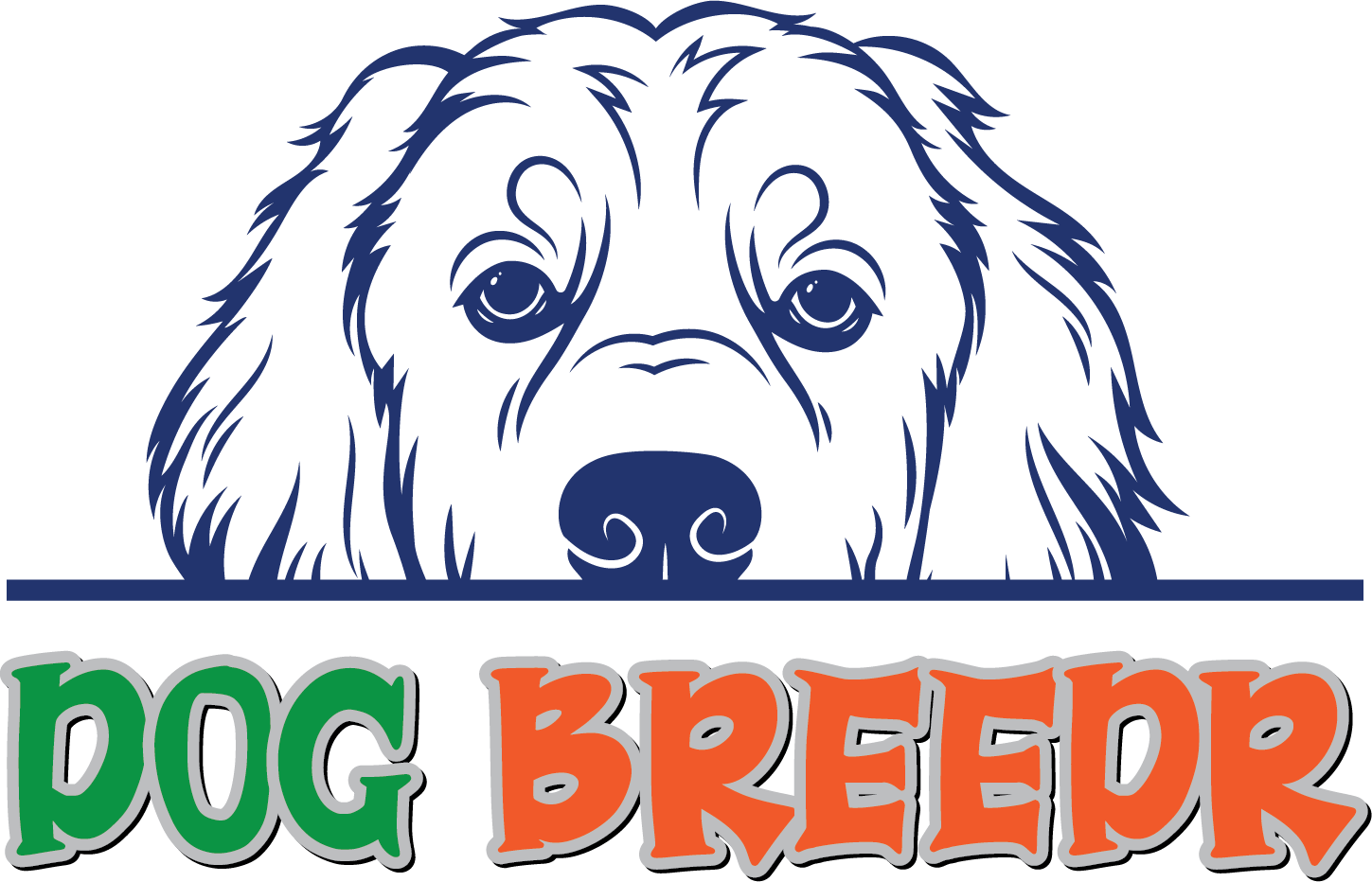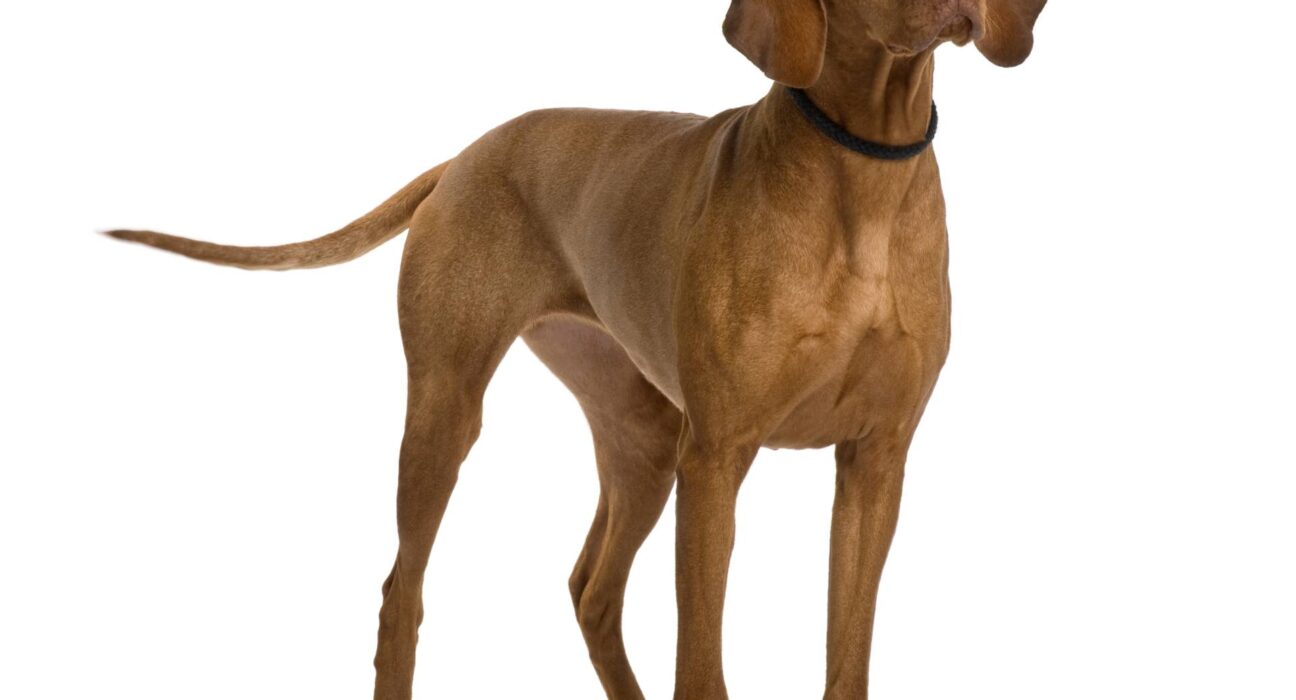The Vizsla is a breed of Hungarian hunting dog that has become increasingly popular as a family pet in recent years.
This glamorous and energetic breed is characterized by its short, rusty-gold coat, muscular build, and affectionate disposition.
Originating in the 10th century to hunt upland game birds, these natural pointers and retrievers have an enduring history that makes them unique among other breeds.
Today, Vizslas are treasured for their intelligence, loyalty, and friendly nature, all of which makes them ideal companion.
Vizsla Appearance
The Vizsla is a medium-sized breed, with males standing 22–24 inches tall and females standing 21–23 inches tall. They typically weigh between 44–55 pounds and have a muscular build.
The most striking feature of the Vizsla is its rusty-gold coat, which can range in color from light tan to deep red. This short, smooth double coat sheds very little and requires minimal grooming.
Other notable characteristics include dark eyes that match the shade of their coat and floppy ears that tend to hang close to the head.
Vizsla Personality
Vizslas are renowned for being knowledgeable and loyal companions who love spending time with their families.
They are energetic and need plenty of physical exercises to stay healthy and happy, making them an excellent choice for an active family.
Vizslas also have a keen sense of smell that allows them to hunt, track, and point accurately. This strong hunting instinct can make Vizslas hardy workers in the field and loving companions at home.
Grooming Tips For Vizslas
Vizslas are noble, loyal, and affectionate dogs that require regular grooming to remain healthy and happy.
Grooming a Vizsla correctly can make all the difference in their physical appearance, personality, and overall health.
Here are some essential tips for properly grooming your Vizsla:
- Brush Regularly – A good brushing is essential for keeping your Vizsla’s coat clean and free from tangles.
It also helps reduce shedding, especially if you have allergies. Make sure to use a soft brush such as an undercoat rake or slicker brush when brushing your dog.
- Trim Nails – Trimming your Vizsla’s nails regularly is essential for preventing painful cracking and splitting of the nails.
You can use a specialized dog nail trimmer or regular human nail clippers. Make sure to be careful when trimming, as you don’t want to cut too far into the quick, which is the pink area in the center of the nail.
- Clean Ears – Dirt and debris can quickly build up inside your Vizsla’s floppy ears, leading to painful ear infections if not cleaned regularly.
Use a gentle ear-cleaning solution and cotton balls to remove any dirt or wax buildup from your dog’s ears once a week.
- Bath Time – When bathing your Vizsla, choosing a shampoo specifically designed for dogs is essential. Never use human shampoo, as it can dry out and irritate your dog’s skin. Rinse off all the soap thoroughly and dry your Vizsla with a towel or blow dryer.
- Teeth Cleaning – Regular teeth brushing is essential for keeping your Vizslas mouth clean and free from bacteria and plaque buildup that can lead to other health problems such as gum disease, bad breath, and more. Use a toothbrush designed for dogs and pet-safe toothpaste when brushing their teeth.
By following these tips, you can ensure that your Vizsla stays healthy, happy, and looking their best. With proper care, grooming and love, they will continue to be the loyal and affectionate companions you’ve come to know and love.
Common Health Problems In Vizslas And How To Treat Them
· Hypothyroidism
Hypothyroidism is a common health problem in Vizslas. It is caused by the thyroid gland not producing enough hormones that regulate metabolism and growth, resulting in weight gain, lethargy, and skin or coat problems.
Treatment for hypothyroidism can involve daily doses of synthetic hormone replacement drugs, dietary adjustments, and lifestyle changes such as increased exercise.
· Dwarfism
Dwarfism is another health issue that affects Vizslas. This condition causes dogs to be smaller than standard size due to a genetic abnormality that results in an incomplete closure of the bones at the end of their legs.
No treatments are available to correct this disorder; however, most cases do not cause any medical problems or discomfort so that they can live everyday life.
· Persistent Right Aortic Arch
A persistent right aortic arch is an uncommon but congenital severe disorder affecting Vizslas. This condition occurs when part of the large artery leading from the heart does not close properly before birth, restricting blood flow to the lungs and other organs.
Treatment for this disorder may involve surgery to remove the abnormal portion of the artery or medications to reduce inflammation and improve circulation.
· Tricuspid Valve Dysplasia
Tricuspid valve dysplasia can also affect Vizslas. This abnormality involves the tricuspid valve, which separates two chambers in the heart, becoming malformed or not functioning correctly.
Symptoms often include difficulty breathing or exercise intolerance due to decreased oxygen levels in the bloodstream. Surgery is typically needed to repair the valve; treatment typically includes blood thinning medications.
· Progressive Retinal Atrophy (PRA)
Progressive retinal atrophy (PRA) is a genetic disorder that causes the gradual loss of vision due to the degeneration of the cells in the retina.
There is no cure for PRA, but some preventative measures owners can take include avoiding exercise during periods of darkness or having their dog wear protective eyewear when outdoors.
Regular eye exams should also be done to check for early signs of PRA. Treatment may include vitamin A supplements and other medications to slow down or halt the progression of the disease.
Overall, Vizslas are generally healthy dogs, but there can be some health issues that owners should be aware of.
Making sure to watch for symptoms of these common disorders and providing regular veterinary care can help keep your dog in good health. With proper care, a Vizsla can have a long and happy life.
The Best Food For Vizslas
Vizslas are highly active, sensitive dogs that require a diet that meets their high-energy demands. The best food for Vizslas will be one rich in animal proteins and healthy fats, as these provide the necessary nutrients for strong muscles and bones and a healthy coat. Additionally, it should include a good balance of carbohydrates to help support their active lifestyle.
One excellent option for a Vizsla is an all-natural kibble made from fresh ingredients like chicken, beef, or lamb. These types of food offer the highest levels of vitamins and minerals your pup needs to keep them looking and feeling their best.
As with any breed, check the label carefully before buying to ensure you choose the best food possible for your four-legged friend.
Another great option is a raw diet. Raw diets are becoming increasingly popular as they help to provide a more natural dietary experience, with ingredients free of added hormones and antibiotics.
An excellent raw diet should include a variety of animal proteins such as chicken, beef, turkey, and fish, along with some fruits and vegetables.
For those who prefer homemade food, there are plenty of recipes available that have been designed explicitly for Vizslas.
These meals usually contain lean meats like chicken or turkey combined with carbohydrates such as brown rice or sweet potato, plus healthy fats from sources like olive oil or coconut oil.
Homemade food can be tailored to meet your pup’s specific needs and help ensure that they’re receiving all the nutrients they need.
Finally, it’s important to note that no matter which type of food you choose for your Vizsla, you should always ensure to provide them with plenty of fresh water each day. This will help keep them hydrated and ensure their overall health is in tip-top shape.
With their good looks, friendly disposition, and hard-working nature, it is no wonder that Vizslas have become such popular companions.
This ancient breed has been treasured for centuries and with the proper care, can be a forever friend to any loving family.
Conclusion
The Vizsla is an energetic and intelligent breed of Hungarian hunting dog that has become increasingly popular as a family pet in recent years.
With its short rusty-gold coat, muscular build, and affectionate disposition, this beloved breed will make a loyal companion for any active household.
Despite requiring regular exercise and training to remain healthy and well-behaved, the Vizsla is an all-around good-natured pet that will bring joy and love to its owners for years to come.

